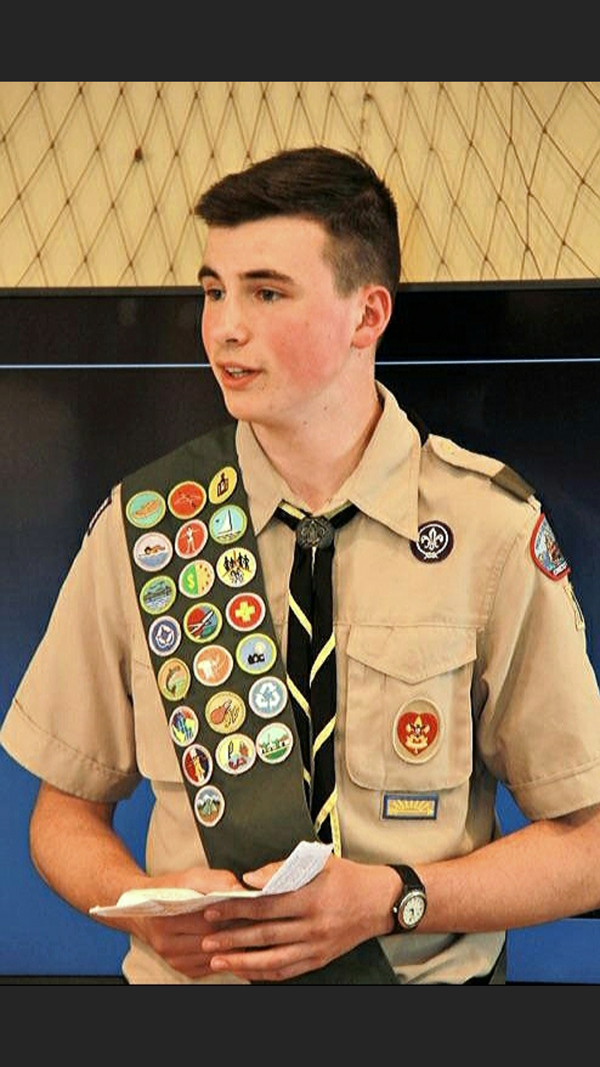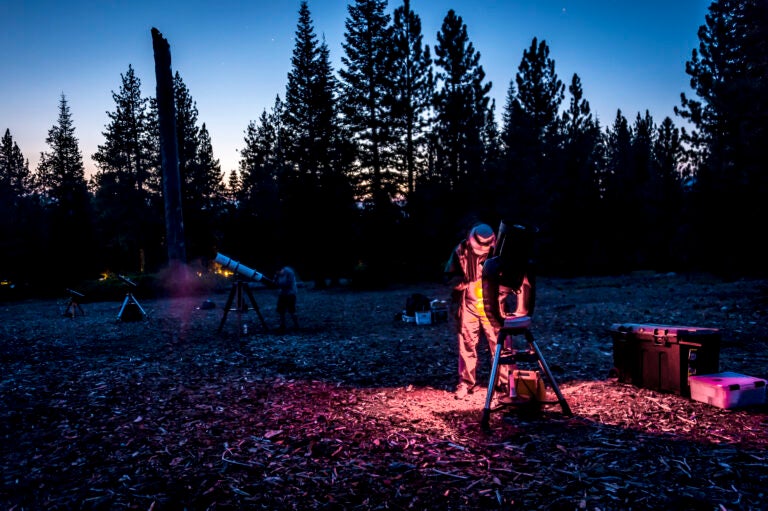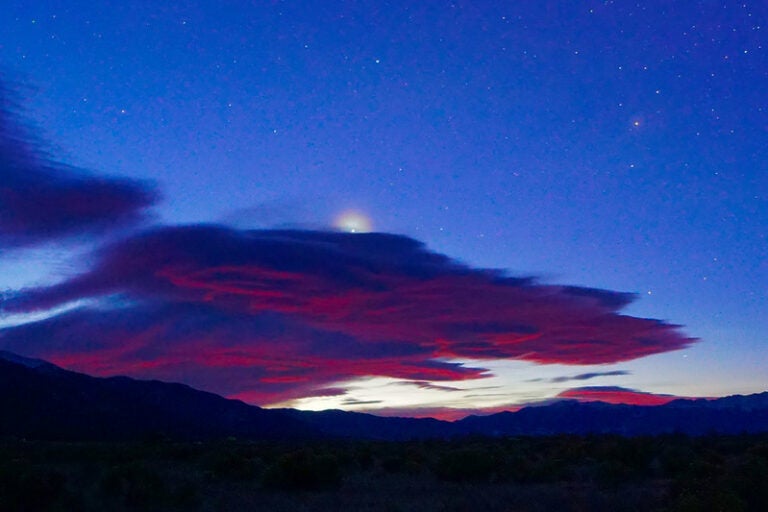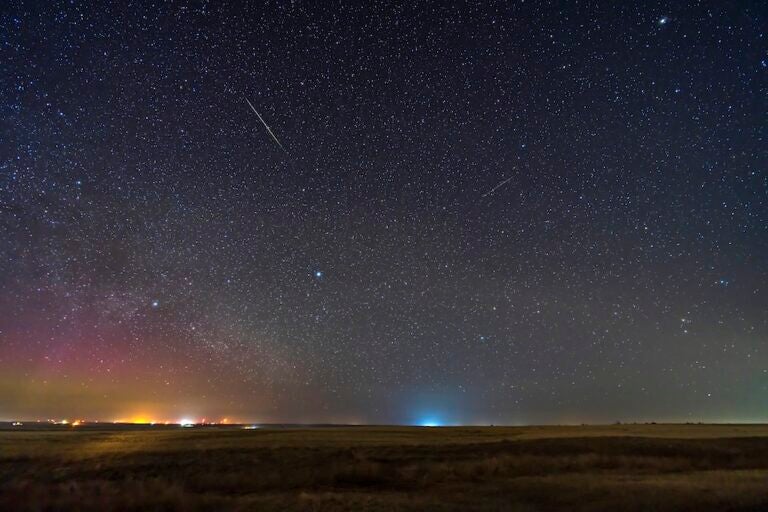The New Pond Farm is a non-profit environmental education center that strives to connect people with nature on the grounds of a real working farm. The 102-acre property is the year-round destination of individuals and groups who visit to enjoy school field trips, adult lectures, family programs, children’s classes, and summer camps.
One of the busiest of the many educational centers on the farm is the astronomy observatory, which sits on the top of a knoll in one of the pastures. It’s also known as Astronomy Hill.
Astronomy on the Hill
“Those of us who live in Redding benefit from some of the darkest skies anywhere in Fairfield County, which makes the observatory at New Pond one of the best in the area,” Martin explained. “Unfortunately, just as is the case with so many other non-profit organizations, New Pond can always benefit from whatever it can get to make the programs better, which I saw as a huge opportunity to benefit others as well as do something I love to do, which is making videos using drones and other techniques.”
Fortunately, it wasn’t long after Martin received a go-ahead for his project from his Scoutmaster before he had recruited a group of 11 fellow Scouts to help him perform many of the needed tasks to benefit the observatory and other program areas of New Pond Farm.
“The observatory at New Pond is one of the busiest program areas at the facility, primarily due to the quality of the enthusiastic team of amateur astronomers who teach monthly programs, the advantages of the area where it is located, and the quality of the equipment they have to teach the programs,” Martin explained.
New Pond’s observatory was built by the late actress Carmen Matthews, who originally intended it for use by students from Western Connecticut State University. It is now used by students from Joel Barlow High School’s astronomy programs, members of the farm, and members of the public. “It really is built as a large learning center, not just something that would be used by a single hobbyist,” Martin explained. “This makes it an excellent site where they can conduct classes inside of a large classroom, then go outside to have observation parties. There is even a smaller outbuilding where the telescopes can be stored.” Another significant contributor to the observatory’s manpower is volunteers at the Richfield Discovery Center, a large group of amateur astronomers who give presentations at New Pond.
Features of the observatory include five hands-on stations with binoculars for astronomical observation, a telescope where you can connect a smartphone and take pictures, lasers used to point out constellations during lectures, maps of our solar system, and much more.
“The real stars of the observatory’s shows are three large telescopes, two 12-inch and a 14-inch telescopes that are all strong enough to make observations in deep space,” Martin says. He added that on an average night at the observatory, amateur astronomers and members of the general public can see Mars, Saturn, the International Space Station, the craters of the Moon, nebulae, and other phenomenon that only the most powerful telescopes can observe.
“Astronomy Hill is one of the best places available in the area where people of any age can enjoy learning about the heavens,” Martin says.
Better equipment, better experience
Astronomy Hill’s latest acquisition is the 14″ Celestron telescope, purchased with generous grants by the Redding Education Foundation and the Meserve Memorial Fund. The large diameter of this telescope gives observers greater light-gathering capability, which means that they are able to observe nearby celestial objects with quite a bit of detail. It also affords the opportunity to view deep-sky objects, like star clusters and galaxies. This scope also features a “go to” capability, which means that when preprogrammed, it will automatically move the view of the scope to the desired coordinates in the sky — for example, an astronomer can press a few buttons and the view will swing from the rings of Saturn to the moons of Jupiter, or to the star-forming nebula in Orion’s belt in just a matter of seconds. This capability is particularly useful when searching for fainter, deep sky objects, especially during the course of a presentation.
“All of these tools and capabilities make everything so much more meaningful to those who participate in the presentations,” Martin says. “Instead of having to wait for a presenter to find a particular object, they can preprogram in what they want to talk about and turn directly to it, [without] wasting time and losing attention in the process.”
As time goes on, the 14″ Celestron telescope will allow volunteers at the observatory to expand into astrophotography, variable star observing, and supernova hunting, things far beyond the reach of casual stargazers. Volunteers can also perform educational research, for use while mentoring high school students and other interested visitors.
Classic meets cutting-edge
In addition to preparing the observatory and other program areas, Martin also worked at programming the video scripts that would be used to promote the facility’s astronomy program. These scripts also feature other areas such as the farm, its geology, and numerous other attractions offered at New Pond.
“The original plan for my Eagle project was to use a drone and the unique perspectives that the technology can give you for interesting photography to promote New Pond Farm,” Martin explained, “but after that aspect of my project was completed, I found that all of the different parts of the farm begged for similar treatment in order to tell the full story of the facility.”
Miles Martin Eagle Scout Project: Astronomy Observatory from New Pond Farm Education Center on Vimeo.
Soon, what had started as a promotional video that benefitted the observatory was promoting the farm, and other interest areas.
According to Tim Laughlin, program director at New Pond Farm, “What Miles has done for the Farm has been phenomenal for all aspects of the organization. What started out as a relatively simple and easy project has turned out to be a tool with so many different applications, that it has really been amazing … The net result of these programs will be summer camps and other attractions that will only add to the already rich benefits of the programs to a growing number of people.” He adds that Martin’s project will allow New Pond to reach people far outside the farm’s usual market, helping to excite community members about astronomy, nature, and much more.
You can learn more about the New Pond Farm, including directions, current hours, and upcoming events, on their website.










